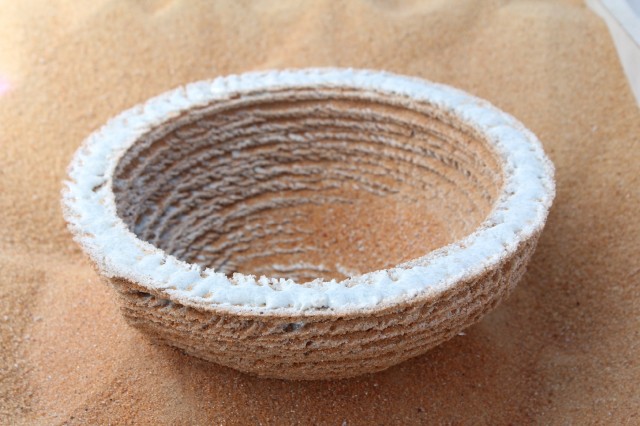Looking Outwards: Physical Computing & Arduino.
The Solar-Sinter is the most inspirational and coolest project I’ve seen in a long time. This video presents it beautifully. (Please watch the video, you wont be disappointed.) The Solar-Sinster uses ReplicatorG software, an open source 3D printing program. Using the sun’s rays as a laser and sand as material it produces glass objects. With the world desperately turning to technology to solve the energy crisis this has enormous potential, being that it uses almost inexhaustible resources. Oh, and this solar-powered machine was made by Kayser as a masters project at Design Products.
heliOscillator by by Noel Murphy and Jamie Salmon in collaboration with Professor Róbertus von Fáy-Siebenbürgen and PhD student Nabil Freij
Each module is embedded with light dependent resistors, allowing the light of the projector hitting the screen to be measured in 42 different points over its surface, each sensors measurement is then used to control the pitch of an oscillator.
The projection itself is a data visualisation based around observations of individual sunspots. Each hexagon section represents one sunspot, and the color and shading of its subsections reflect the change in size and darkness of that spot over time. The 6 sub sections match up with the light sensors, so every change in color and intensity is measured and reflected in sound.
The Kernels of Chimaera by Stefan Schwabe
The machine contains living bacteria that produce layers of cellulose. These grown layers are automatically harvested and penetrated by a syringe in order to be inflated with air. The entire kernel is then dried out by a stream of air, then it it light enough to fly up into a second chamber. This was very intriguing because it takes living things and processes them in a mechanical way, not like the way that it happens everyday (food production, chia pets, ect.) but it is reminiscent of a biological factory.
